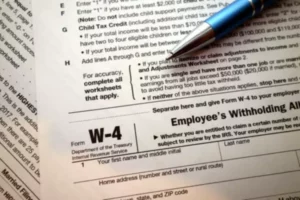
In a partnership, separate entries are made to close each partner’s drawing account to his or her own capital account. If a corporation has more than one class of stock and uses dividend accounts to record dividend payments to investors, it usually uses a separate dividend account for each class. If this is the case, the corporation’s accounting department makes a compound entry to close each dividend account to the retained earnings account. You need to use closing entries to reduce the value of your temporary accounts to zero. That way, your next accounting period does not have a balance in your revenue or expense account from the previous period. This process ensures that your temporary accounts are properly closed out sequentially, and the relevant balances are transferred to the income summary and ultimately to the retained earnings account.
- By doing so, the company moves these balances into permanent accounts on the balance sheet.
- Whatever accounting period you select, make sure to be consistent and not jump between frequencies.
- And without closing expense accounts, you couldn’t compare your business expenses from period to period.
These accounts have continuous balances that carry forward from one accounting period to another. Examples of accounts not affected by closing entries include asset, liability, and equity accounts. The retained earnings account is reduced by the amount paid out in dividends through a debit, and the dividends expense is credited. You need to create closing journal entries by debiting and crediting the right accounts. Use the chart below to determine which accounts are decreased by debits and which are decreased by credits. For example, if your accounting periods last one month, use month-end closing entries.
How to Post Closing Entries
Once all of the required entries have been made, you can run your post-closing trial balance, as well as other reports such as an income statement or statement of retained earnings. All of these entries have emptied the revenue, expense, and income summary accounts, and shifted the net profit for the period to the retained earnings account. Income summary is a holding account used to aggregate all income accounts except for dividend expenses. Income summary is not reported on any financial statements because it is only used during the closing process, and at the end of the closing process the account balance is zero. Temporary account balances can either be shifted directly to the retained earnings account or to an intermediate account known as the income summary account beforehand. If you don’t have accounting software, you must manually create closing entries each accounting period.

Temporary accounts are accounts in the general ledger that are used to accumulate transactions over a single accounting period. The balances of these accounts are eventually used to construct the income statement at the end of the fiscal year. This process resets both the income and expense accounts to zero, preparing them for the next accounting period. A net loss would decrease retained earnings so we would do the opposite in this journal entry by debiting Retained Earnings and crediting Income Summary.
Understanding Closing Entries
When closing the revenue account, you will take the revenue listed in the trial balance and debit it, to reduce it to zero. As a corresponding entry, you will credit the income summary account, which we mentioned earlier. No, closing entries are performed after adjusting entries in the accounting cycle. Adjusting entries ensure that revenues and expenses are appropriately recognized in the correct accounting period.

To update the balance in the owner’s capital account, accountants close revenue, expense, and drawing accounts at the end of each fiscal year or, occasionally, at the end of each accounting period. For this reason, these types of accounts are called temporary or nominal accounts. When an accountant closes an account, the account balance returns to zero.
Automating accounting management to increase projection velocity
Lengthy accounting cycles and inaccurate projections can result in revenue leaks costing companies millions. We’re firm believers in the Golden Rule, which is why editorial opinions are ours alone and have not been previously reviewed, approved, or endorsed by included advertisers. Editorial content from The Ascent is separate from The Motley Fool editorial content and is created by a different analyst team.
Close expense accounts
By using a worksheet, you can easily see the effects of adjustments and closing entries on the financial statements, and avoid mistakes or omissions. You can also use a worksheet to prepare reversing entries, which are optional entries that cancel out some of the adjustments made in the closing process. The income summary account is only used in closing process accounting.
The last closing entry reduces the amount retained by the amount paid out to investors. If your revenues are greater than your expenses, you will debit your income summary account and credit your retained earnings account. Clear the balance of the expense accounts by debiting income summary and crediting the corresponding expenses. On the statement of retained earnings, we reported the ending balance of retained earnings to be $15,190.
You can report retained earnings either on your balance sheet or income statement. Without transferring funds, your financial statements will be inaccurate. A worksheet is a tool that helps you organize and summarize the information needed for closing entries. It consists of several columns that show the trial balance, adjustments, adjusted trial balance, income statement, and balance sheet.
